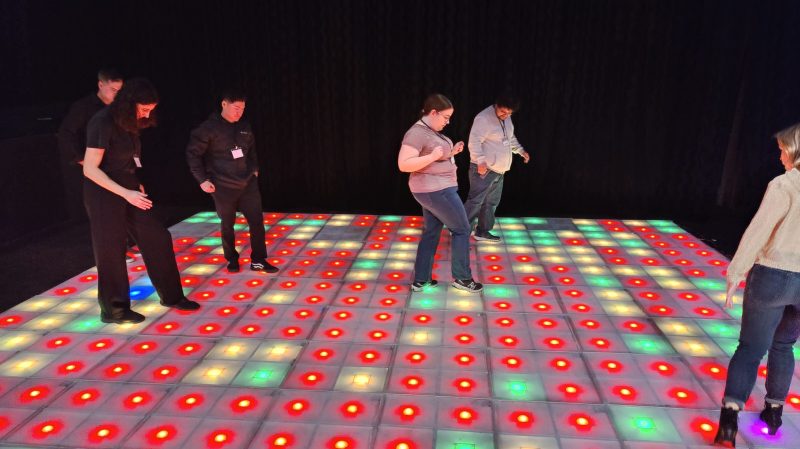[Stevenson Streeper] is a maker, and was recently charged with a serious mission. He had to prototype, design, and build a board game. A software-controlled board game, that is, and one that was 400 square-feet in size. As you might imagine, this ended up being a tall order, and he’s been kind enough to share his tale on his blog.
His client’s idea was for a giant interactive game board akin to the glowing disco floors of old. It had to play a game approximating the rules of “The Floor Is Lava.” It had to handle up to 20 players at a time, too.
[Stevenson] runs a company that delivers “Activations”—basically big showpieces for customers willing to pay. This wasn’t his first attempt at building an immersive attraction, but it was a big job, and a challenging one at that. He explains the difficulties that came about from a limited crew, limited timeline, and a number of difficult missteps. Hurdles included surprise unusable off-the-shelf hardware and the difficulty of hand-sanding 144 tiles of polycarbonate. One weeps for the project’s plight early on – if only the AliExpress tiles were documented.
He may have bitten off more than he could chew, and yet—the project was finished and to a decent degree of functionality success. That’s to be applauded, and [Stevenson] learned a ton along the way. Big projects can be daunting and can put you in a bind. As this story demonstrates, though, perseverance often gets you somewhere okay in the end. Video after the break.
















Size isn’t everything.
Your wife is lying to you
She’s been lying to all of us.
Wait, what?! 🥺
Having read the full writeup, I’m amazed they got anything working at all! Top marks for perseverance though.
I am currently doing a 2-year woodworking (furniture making course). I’m deep enough into it that I work 1day/week less for it. I love the course, yet I wouldn’t want to make it my profession, the dealing with timelines and clients would take all the fun out of it for me.
Great writeup to read.
It’s also clear that [Stevenson Streeper] isn’t a HAD reader ;)
https://hackaday.com/2016/11/07/neopixels-light-the-way-in-pressure-sensitive-floor/
I found strange that he didn’t just opt to use the existing Chinese tiles, that he said were solid, with new electronics. He would have save a lot of time and stress not having to work on the mechanical aspect of the design.